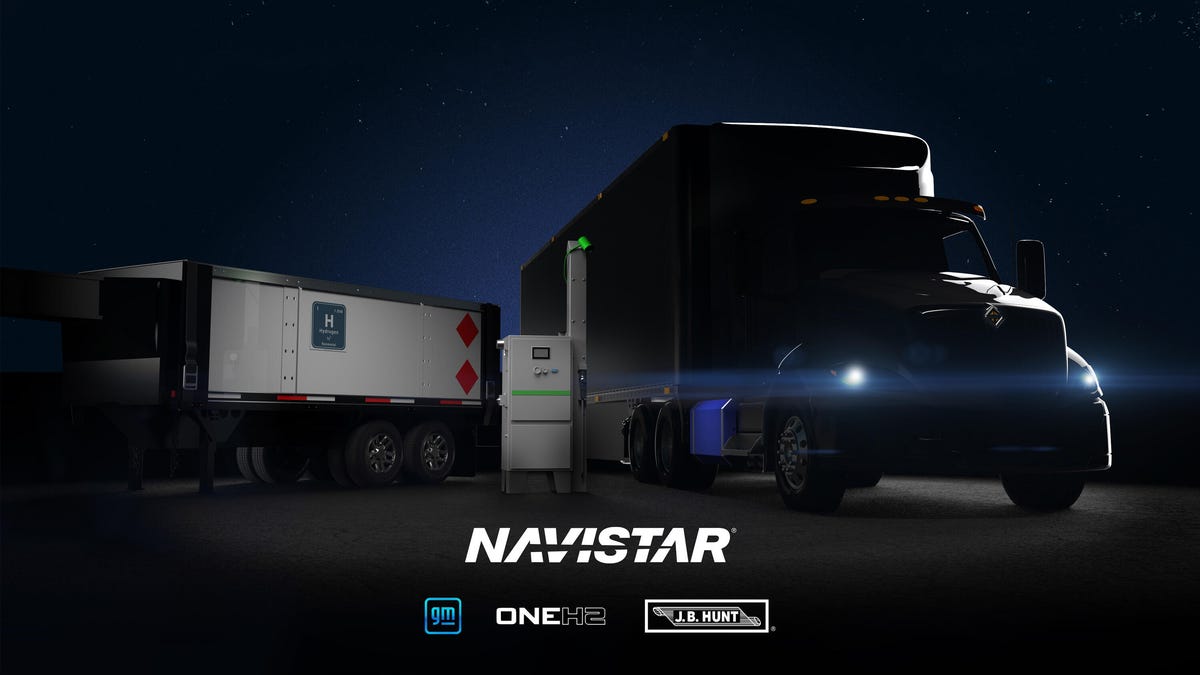Navistar, GM, OneH2 combine forces for long-haul hydrogen-electric trucks
The trio claims it's a "complete solution," covering an entire ecosystem of sustainable logistics.
When it comes to electrifying the logistics industry that underpins modern society, building the trucks themselves is only part of the equation. There's a whole support system that needs to be in place as well, which is why going it alone isn't possible to make the sort of impact needed in this situation. To that end, General Motors is teaming up with multiple companies to create a soup-to-nuts solution for electrifying long-haul trucks.
Navistar, the company formerly known as International Harvester, announced on Wednesday that it's partnering with GM and OneH2 for a "complete solution for customer implementation of a zero-emission long-haul system," which is a fancy way of saying an entire ecosystem devoted to electric trucking. The group will work together on the trucks themselves, in addition to the ancillary stuff required to keep them operating.
It starts with the trucks, which in this case will be International RH Series hydrogen fuel-cell electric trucks. Each RH Series semi will get two GM Hydrotec fuel cell power cubes, each of which contains more than 300 hydrogen fuel cells in addition to the management systems that run the whole show. Navistar plans to have these trucks ready for commercial purchase in the 2024 model year, with test models operating in a pilot phase by the end of 2022. The hope is that these trucks will pack a range of 500 miles or more with a fueling time of less than 15 minutes and Navistar hopes that its propulsion system will sport a per-mile cost similar to diesel.
Here's a peek at GM's Hydrotec fuel cell cube, which is, clearly, not actually a true cube. Calm down, pedants.
When it comes to the fuel itself, that's where OneH2 comes into play. Navistar will rely on the company for the production, storage and safe delivery of the compressed hydrogen required to power the trucks. To deepen the partnership, Navistar announced that it will purchase a minority stake in OneH2, as well. OneH2 doesn't just deal in gas-station-style fill up locations; the company has a mobile fueling solution, too, which should help in the early stages as the US' hydrogen fuel infrastructure is still very much in its infancy.
"Hydrogen fuel cells offer great promise for heavy duty trucks in applications requiring a higher density of energy, fast refueling and additional range," said Persio Lisboa, Navistar president and CEO, in a statement. "We are excited to provide customers with added flexibility through a new hydrogen truck ecosystem that combines our vehicles with the hydrogen fuel cell technology of General Motors and the modular, mobile and scalable hydrogen production and fueling capabilities of OneH2."
Navistar has chosen J.B. Hunt Transport to be in charge of its vehicles during the pilot program. J.B. Hunt, a name you've likely seen on the highway, will put Navistar's GM-powered International models on dedicated routes to see how these vehicles perform in place of traditional diesel-powered semi trucks.


